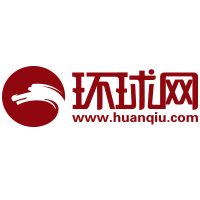
Customers check out new-energy vehicles at a large shopping mall in Jinhua, East China's Zhejiang Province on February 23, 2025. According to data from the National Development and Reform Commission, China issued 150 billion yuan ($20.7billion) in ultra-long-term special government bonds in 2024 to support trade-in programs for consumer goods, boosting sales of more than 1.3 trillion yuan. Photo: VCG
Three Chinese government departments announced on Tuesday a plan to provide subsidies on qualified personal consumer loans with a maximum of 3,000 yuan ($417.35) per person.
The plan aims to reduce the cost of consumer credit for residents, help unleash their consumption potential, and promote faster and better economic development, according to a document co-released by China's Ministry of Finance, the People's Bank of China (PBC), and the National Financial Regulatory Administration.
Xi Junyang, a professor at the Shanghai University of Finance and Economics, told the Global Times on Tuesday that consumption is now a vital driving force for China's economic growth. "Regarding the 0.4 percent rise of the consumer price index in July, there is still room for growth in China's consumption momentum," said Xi Junyang, noting that the interest subsidy policy is expected to boost consumption activity in the second half of the year.
The policy will be in effect from September 1, 2025, to August 31, 2026. The subsidy covers single purchases under 50,000 yuan in key areas such as personal vehicles, eldercare and childbirth, education and training, cultural tourism, home furnishings and decoration, electronic products, and healthcare. For single purchases exceeding 50,000 yuan, the interest subsidy is capped at the 50,000-yuan consumption amount, according to the document.
The annual interest subsidy rate is 1 percentage point, capped at 50 percent of the loan contract interest rate. The central government covers 90 percent of the subsidy, and provincial governments cover 10 percent. Each borrower can receive up to 3,000 yuan in total subsidies per lending institution, with a limit of 1,000 yuan for loans under 50,000 yuan, it said.
Xi Junyang indicated that these subsidies are crucial as they can drive overall consumption growth and are closely linked to high-quality economic development and productivity improvement, highlighting the highly targeted features of the policy. He also noted that the initial 1 percentage point interest subsidy rate is relatively conservative and should be considered a pilot measure, leaving room to observe the policy's effectiveness.
Qualified loan institutions include six large state-owned banks, 12 national joint-stock banks, and five other consumer loan providers. Local governments are encouraged to support more institutions, and the policy's duration and scope may be extended based on its effectiveness, the document stated. The document also mentioned plans to strengthen supervision and constraints to ensure that the interest subsidy funds are used exclusively for their designated purposes.
The Chinese government has been focusing on promoting nationwide consumption this year. Aside from continuing the consumer goods trade-in program that started in 2024, China made public a plan involving special initiatives to increase consumption, which aims to vigorously boost consumption, stimulate domestic demand across the board, and increase spending power by raising earnings and reducing financial burdens, the Xinhua News Agency reported.
In addition, guidelines jointly issued by six state organs including the PBC on June 24, 2025 called for stronger financial support for both goods and services consumption. The guidelines proposed 19 key measures in six aspects, including supporting the enhancement of consumption capacity, expanding financial supply in the consumption sector and tapping residents' consumption potential, Xinhua reported.

